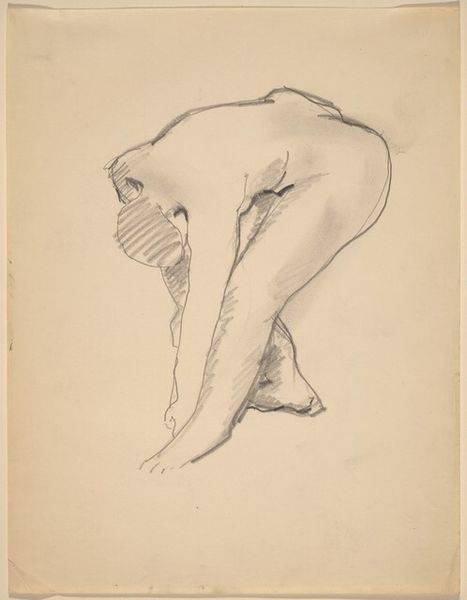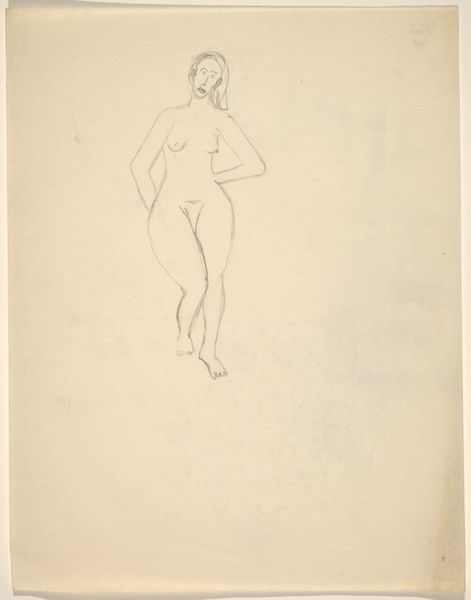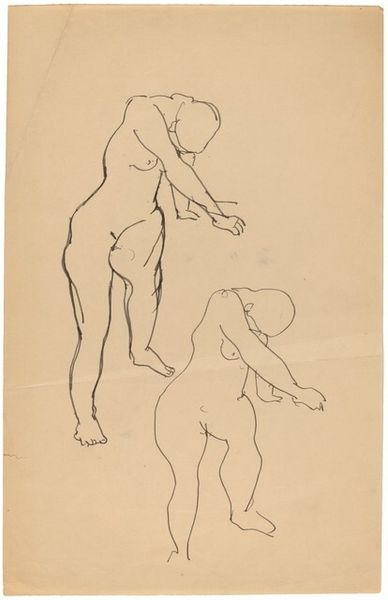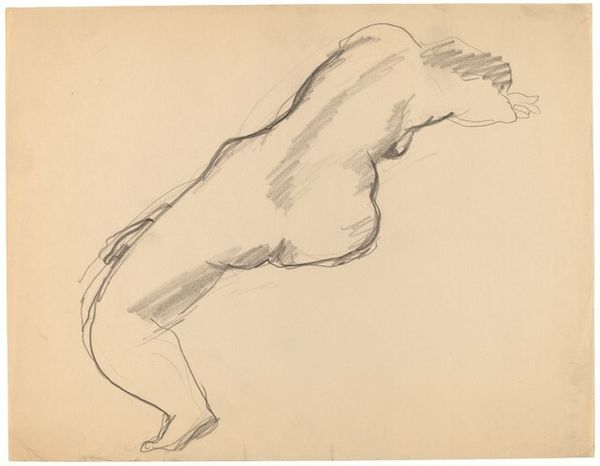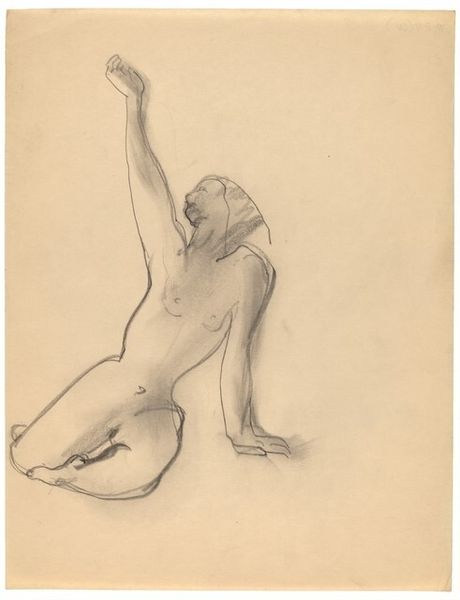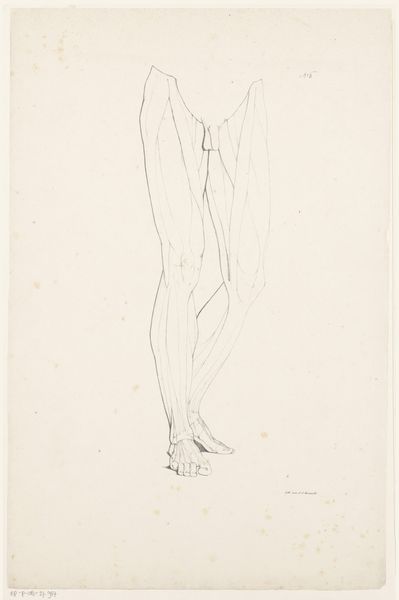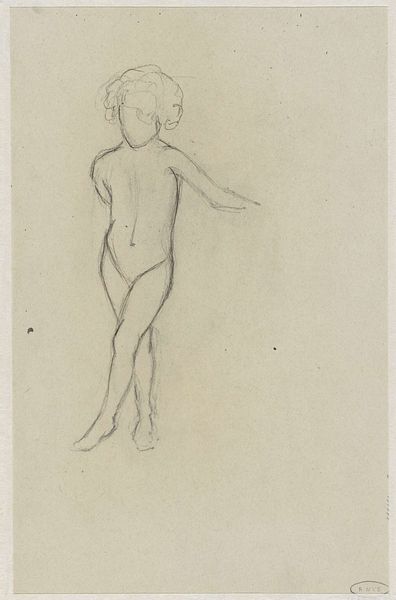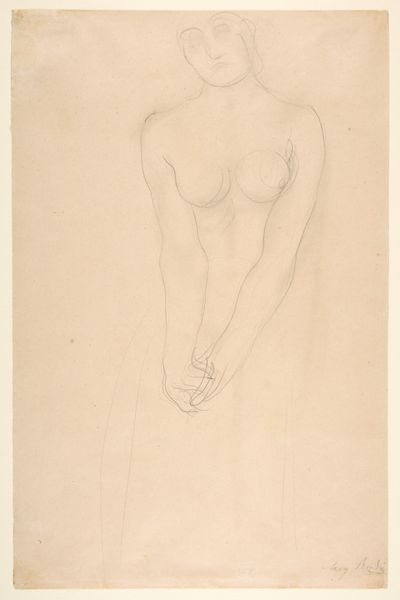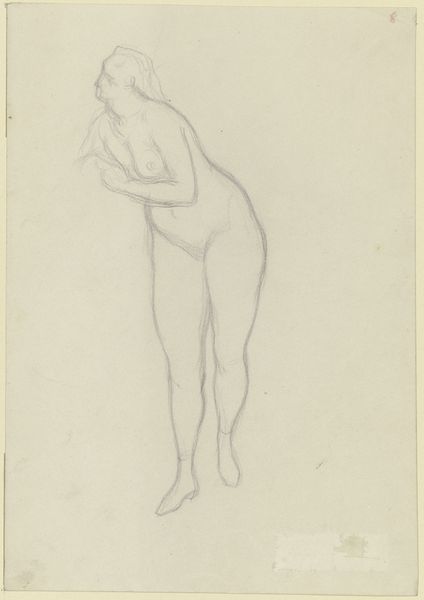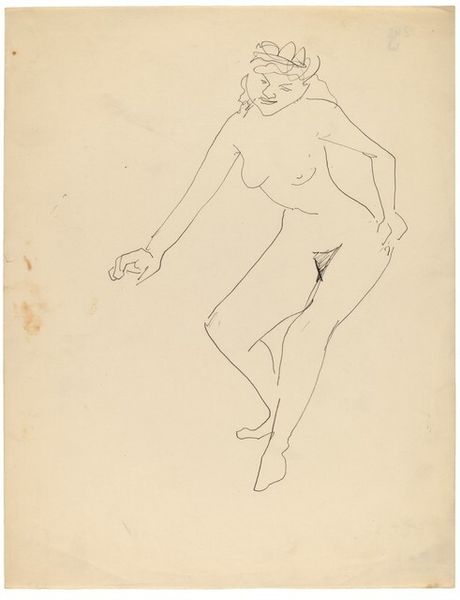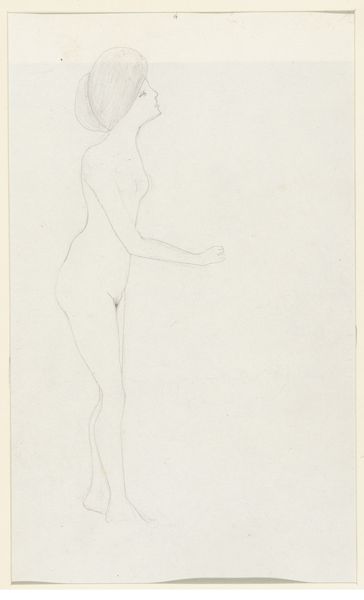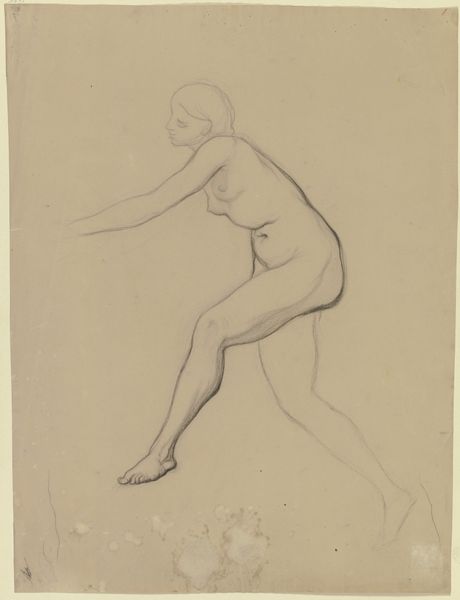
drawing, pencil
#
portrait
#
drawing
#
ink drawing
#
pencil sketch
#
figuration
#
pencil
#
academic-art
#
nude
#
modernism
Dimensions: sheet: 32 x 28.2 cm (12 5/8 x 11 1/8 in.)
Copyright: National Gallery of Art: CC0 1.0
Curator: Let's discuss Rockwell Kent's drawing, "Female Nude (The Artist's Wife)," created around 1910 using pencil. Editor: It has this feeling of raw intimacy, almost like a fleeting glimpse caught when the subject is unaware. The spare lines evoke vulnerability, don’t you think? Curator: Indeed. Nudes often embody complex symbol systems of the human form that goes back millennia. What associations does the academic rendering evoke for you? Editor: The somewhat impersonal rendering can also speak volumes about power dynamics inherent in artistic representations. Early modernism often involved critiquing such established norms. Whose gaze are we implicated in when looking at this woman? It challenges conventional ideals of beauty and prompts a reckoning with the representation of the female body in art. Curator: I see the subversion of traditional allegorical nudes as rooted in a humanist tradition where classical elements signify a universality and timelessness. By using such an austere composition to illustrate what would traditionally be an intimate setting, perhaps this illustrates a psychological distancing that reveals certain challenges about relationships at the time. What do you read from the image’s simplicity and focus? Editor: Perhaps the very sketchiness—the undone quality of the image—becomes a political statement. An intentional turn away from high-gloss objectification towards something more raw, real, and decidedly less perfect. Also, do you note how she bends towards her leg as if caring for herself? In this interpretation the figure almost actively defies being pinned down, either aesthetically or ideologically, despite its appearance of simple passivity. Curator: Fascinating! Considering how the medium’s texture provides much of the affect, it’s interesting how it lends both an element of permanence through its depiction in graphite while still being an intimate look into a past, unrecoverable moment. Editor: This conversation shows how artworks can spark meaningful dialogue, prompting us to critically examine not only the art itself but also the culture within which it was created and received. Curator: Indeed. Through line, form and negative space, the personal emerges from within the formal, sparking fresh insight from enduring symbols.
Comments
No comments
Be the first to comment and join the conversation on the ultimate creative platform.
